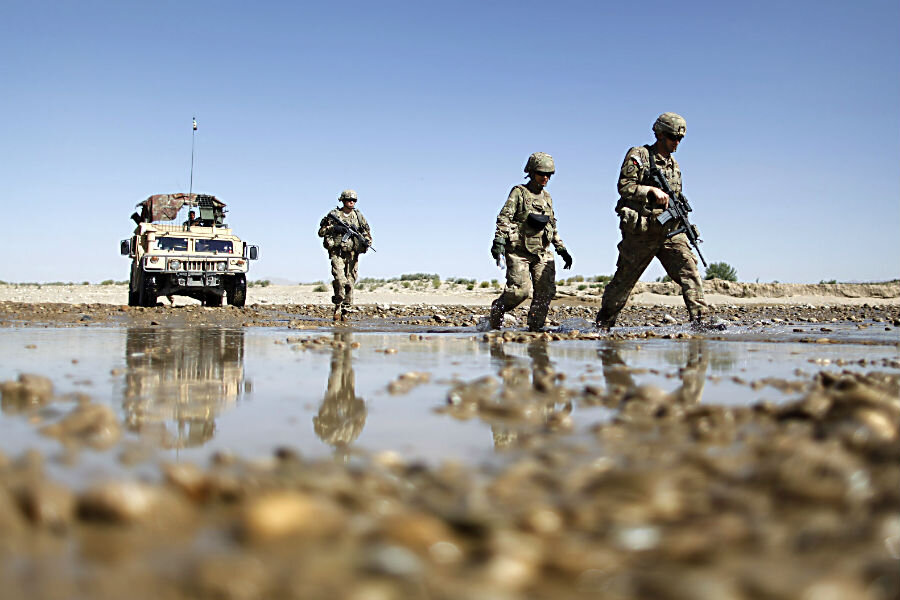When will US forces leave Afghanistan?
Loading...
Amid a Taliban resurgence and ongoing struggles against Al Qaeda and Islamic State (IS) forces, the United States military presence in Afghanistan is not diminishing despite past pledges of withdrawal.
US operations in the Islamic republic – fighting terror threats and training Afghan security forces – are continuing, and the 9,800 US troops currently deployed there will remain at least through this year at an annual cost of $15 billion.
The US presence in Afghanistan has been sustained for well over a decade, cumulatively costing more than $1 trillion and at its peak supporting around 100,000 troops in the region. US operations there have incurred more than 2,200 US military deaths and left more than 20,000 wounded in action. One American soldier has been killed in Afghanistan so far this year.
Although the US officially announced its intentions to withdraw the majority of its troops from Afghanistan in 2014, those plans have now been shifted and a scaling back would begin in 2017 at the earliest. By that point, an estimated 5,500 troops would remain to work with Afghan forces and maintain a US presence there. Plans to completely eliminate US military operations in Afghanistan have not been announced.
“We believe we're on the right course,” Pentagon spokesman Peter Cook said earlier this month, according to Reuters. “We remain confident in the future of the Afghan government and the Afghan security forces.”
A US policy for vacating Afghanistan has been in the works for years and the concept was one of President Obama’s key campaign points. But the worsening security situation there has led to the reconsideration of an exit strategy. The collapse of US-trained forces in Iraq and the rise of the Islamic State insurgency in the past year have also caused a reevaluation of an Afghan departure.
“The speed and extent of the withdrawal in Iraq is a cautionary tale,” Michèle Flournoy, chief executive of the Center for a New American Security, said to The Washington Post. “This is not a region you want to abandon."
“What we’ve learned is that you can’t really leave,” a senior Pentagon official told the Post. “The local forces need air support, intelligence and help with logistics.They are not going to be ready in three years or five years. You have to be there for a very long time.”
The move to push back the disengagement of US forces in Afghanistan comes at a time when Taliban and IS forces have taken control of large areas across the country and are seeing increased regional support.
“No matter what happens in the next couple of years, Afghanistan is going to have wide ungoverned spaces that violent extremist organizations can take advantage of,” military spokesman Brig. Gen. Wilson Shoffner said to the Post. “The [Al Qaeda training] camp that developed in southeastern Kandahar is an example of what can happen.”
In addition to the persistent presence of troops there, the Pentagon recently announced that the US military now has authority to attack Islamic State targets in the region, the first place outside of Iraq and Syria where such permission has been granted.
An ongoing US effort alongside Afghan forces would potentially help the country’s military develop and remain stable even after the eventual departure of American troops, in contrast to how operations in Iraq fell apart after US forces vacated. But even now, Afghanistan’s army units in the contested Helmand region fighting the Taliban are currently undergoing a restructuring phase due to “a combination of incompetence, corruption and ineffectiveness,” according to Shoffner, per the Associated Press. This move could suggest that even with the present US assistance Afghan troops receive, they are not prepared to be autonomous in their fight against the Taliban and other militant groups and could benefit from ongoing US advisement.
“Our presence right now helps serve as a significant bulwark against instability, and at a cost that I think is reasonable to bear,” said Daniel Feldman, the former US Special Representative for Afghanistan and Pakistan, to the Post. “Particularly if we’re not proposing a significant combat role, I think the American people would be open to the argument of sticking with Afghanistan.”







